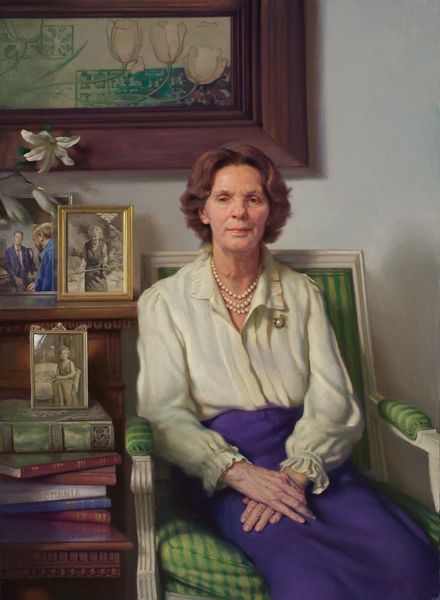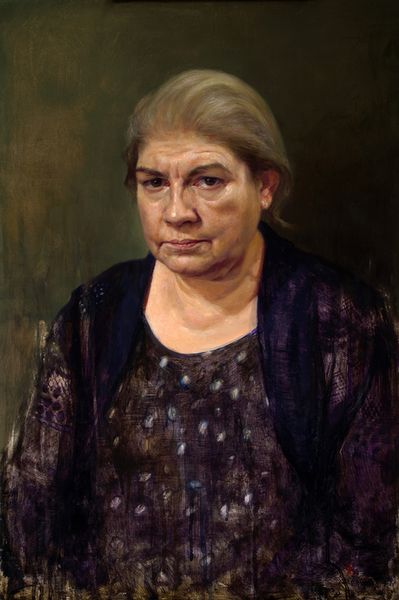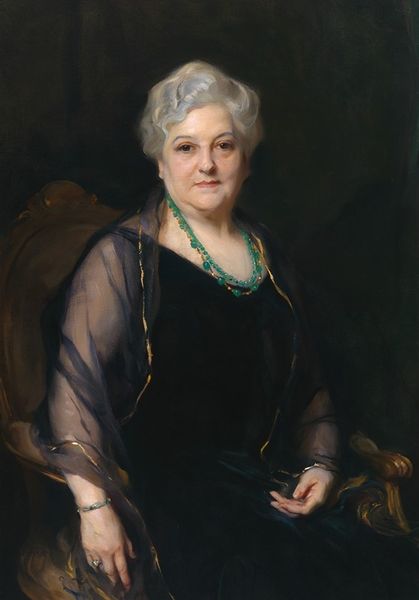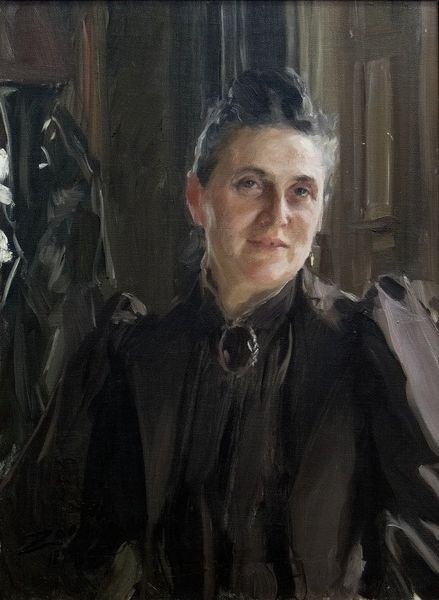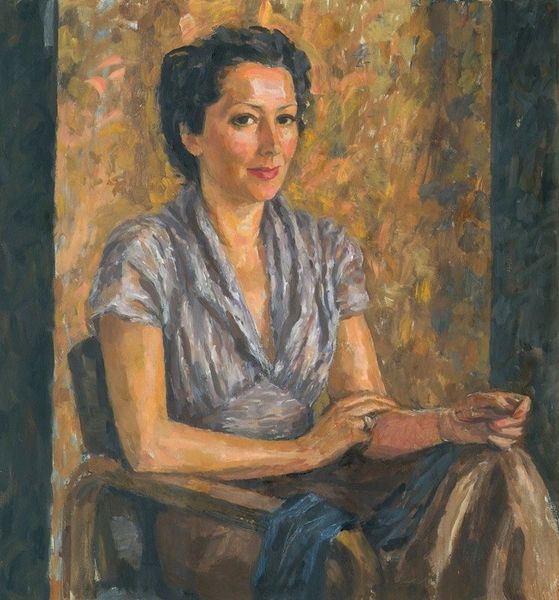
Dr. Carol Ammon, Founder & CEO, Endo Pharmaceuticals, Chadds Ford, Pennsylvania
0:00
0:00
painting, oil-paint
#
portrait
#
figurative
#
painting
#
oil-paint
#
academic-art
#
portrait photography
#
realism
Copyright: Modern Artists: Artvee
Curator: Here, we have Daniel Greene’s portrait of Dr. Carol Ammon, the Founder & CEO of Endo Pharmaceuticals. What do you make of it? Editor: It feels very traditional in its presentation – almost academic in its style and subject matter. The way she's posed and the meticulous detail, particularly in her patterned jacket, suggest a classic formal portrait. I’m curious about the material aspect and process of creating a piece like this. What does the materiality say about this particular kind of subject matter? Curator: Exactly. Look at the labor involved in rendering that patterned fabric in oil paint! The time and skill invested highlight not just her position, but also the values attached to such commissioned works. It's a type of cultural production meant to signal success. Does that strike you as distinct from other portraiture? Editor: It does, especially compared to more modern or abstract portraits that seem to focus less on perfect representation. Was oil paint always considered the de facto material for a formal portrait of someone like this? What alternatives existed and why this one here? Curator: Oil paint's historical dominance in portraiture stems from its ability to render skin tones realistically and its perceived association with wealth, power, and permanence. Its cost made it a status symbol in itself. Other media, like pastels or even early photography, were available but might have lacked the desired prestige for a portrait like this one. Do you think the fireplace is simply background, or is it integral to our analysis? Editor: I think it definitely contributes. The setting itself is interesting. It seems like she's posed in front of the trappings of upper-class living - not ostentatious wealth, but understated quality and permanence with the use of stone. A space to denote power but with the material aspects offering some commentary on social production. Curator: Yes, the stone, like the oil paint, speaks to the history of labor, extraction, and social stratification. Both carry symbolic weight beyond their mere physical presence in the artwork. Understanding these processes, from the artist's studio to the source of the building materials, gives us a fuller understanding. I think that is critical to unpacking works such as this. Editor: That gives me a new appreciation for portraits. Thanks for drawing out the connection between materials, processes and the subject matter.
Comments
No comments
Be the first to comment and join the conversation on the ultimate creative platform.
